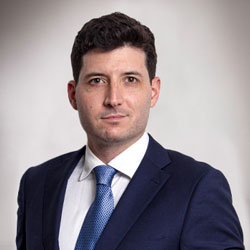Archive for year: 2022
Who’s Flying Now?
Enabling more team members to travel by private jet or charter makes sense— except when it doesn’t.
By Dale Buss
July 29, 2022
The boom in corporate travel on private aircraft is taking on a new dimension: It’s not just for CEOs and board members any longer.
More executives and managers at lower levels now are getting on company planes or taking charters as a productivity measure. A growing number of companies also are using the prospect of private flying as a perk to lure executive or managerial talent. Employers are scrambling to formulate policies to cover this new twist: Who gets to go private, and when?
“Larger aircraft for longer range are still mainly being used for board activity,” says John Owen, CEO of private-flight provider Airshare. “But we’re also seeing engagement teams using smaller aircraft. There’s a little more carte blanche for them to use private aircraft when they need them, versus the previous practice of having to travel [only] with someone who ranks above them.”
Doug Gollan sees this expansion as founder of Private Jet Car Comparisons, a buyer’s guide for time-share seats. “Companies, having bought 25 or 50 hours for a CEO, now are buying a couple hundred hours after the CEO sees how efficient it is, and allowing more of the management team to fly privately,” he says.
The practice has caught on in part because the productivity benefits of private aviation have become more apparent in the last couple of years. “Face-to-face meetings have become really important again,” says Ramy Sidholm, head of PNC Aviation Finance. Meetings are easy on planes and insulated from distractions. Executives don’t get snarled in the vagaries of commercial travel or exposed to its riskier environs while Covid still rages.
The difficulties of airline travel have shunted more lower-level corporate travel to private aviation. Even as commercial schedules have recovered, pilot shortages and other factors mean airlines have drastically culled routes to many of America’s secondary and tertiary cities.
“If you’re a large, multinational corporation and you’re putting a factory, a switching station or a data warehouse in a relatively inexpensive place like Tucson, Arizona, or Alliance, Texas, you stuck it there because it’s inexpensive to build and operate there,” says Greg Raiff, CEO of Private Jet Services. “But it’s tough to get there by air.”
In fact, dangling private flights has become a recruiting tool. “With the Great Resignation, so many people are looking for perks, certainly at the senior level, and if a company has a vast footprint, it’s something many executives are considering more than ever,” says Joseph Smith, aviation director for the Cassel Salpeter investment-banking firm.
Essentially, more companies are pivoting to the sort of approach that Walmart has used for decades. America’s largest retailer employs its fleet of a couple dozen private planes as a corporate livery service, dispatching lower-level executives and managers to string together visits to its 10,500 stores in 24 countries. In the U.S., per Walmart’s business model, most stores are still in smaller places like Gardner, Kansas, and Easley, South Carolina.
But not every company is going in this direction. It’s understood, for instance, that General Motors hasn’t budged on its private-flight policies lately, though the automaker operates 118 facilities scattered across the United States.
Here are some ideas for dealing with this trend:
- Work it forward. The broadening of private air travel within an organization should cascade back into any planning for new aircraft or budgeting for time shares on planes, especially at a time of continued tight supplies of both planes for purchase and time-share seats.
“We work with new prospects to give them a total trip and cost analysis on an annual basis before they buy anything,” Owen says. “This will help them build a budget for each department or individual, which creates a little more structure around what they’re going to put into effect.” - Ponder the perk. CEOs and boards can use private flying as a lure or reward on an individual basis, or open up the practice to new categories, such as vice presidents. “Companies need to think about the development of their people, their business, whether they want to convey a change in culture that the best and brightest are going to be allowed to use these kinds of assets to do their job and to do it right and fast,” says David Mayer, partner with the Shackelford, Bowen, McKinley & Norton law firm.
- Expect pleasant surprises. Private flying is increasingly cost competitive with airline flights these days, especially if the destination is a second- or third-tier city, the travel is frequent and regular, and a number of employees are involved. “If you start seeing that the company has four or more employees traveling the exact same route two days a week, for instance, chances are you should be looking at some version of a corporate shuttle,” Raiff says.
Joseph Smith, Cassel Salpeter Adds Smith, “You may not do it for one person unless it’s an emergency. But for a team performing due diligence or looking for a new acquisition, it can be very efficient to pack six to a dozen people on a private plane.” - Attune the bureaucracy. Many corporate travel departments planners have stayed away from private aviation “because it’s high stakes and highly visible; they don’t mess with it,” Raiff says. But with more of their traditional internal clientele now becoming eligible for private travel, this part of corporate operations may need to rise to the occasion.
“Find a consultant and get smart before you start spending money,” he says. “Learn about the private-aviation space. It’s here and it’s not going away.” - Beware tax snares. With expanded rosters of individual participants comes potential exposure of more travelers to the IRS. So aircraft-use policies should take into account the tax ramifications of business and personal transportation of permitted passengers on an employer-provided aircraft.
“It can involve the flight’s ‘fringe-benefit’ value to these new travelers unless they otherwise pay for the flight,” Mayer says. - Don’t over-glamorize. C-Suite and board members may still get to ride on bigger, faster and more expensive planes than underlings. But the differences in their on-board environs are mainly going to be a matter of a little more personal space and maybe a guaranteed bathroom on the plane, or the presence of a flight attendant.
It’s not like the top brass are receiving foot massages while a regional manager can only expect a bag of peanuts. “The wealthiest client we have only wants pizza and sour gummy worms on the plane; it’s not about the caviar,” Raiff says. “What people value about private aviation is that it’s a time machine. It gets there faster. It is, in fact, private, and it allows people to be more productive, and that goes for everyone.”
Click here to read the PDF.
Click here to read the full article.
mRNA’s Next Act: Cancer Vaccines and Gene Editing
By Gail Dutton
July 26, 2022
The potential for mRNA technology extends far beyond the COVID-19 vaccines that made it a household word. Coming applications include therapeutic vaccines for cancer and other diseases, vaccines for latent conditions such as shingles and herpes, and, eventually, mRNA therapeutics for conditions where immune activation is unnecessary.
“The applications for mRNA are quite broad, because, basically, you are giving information to a cell to make any protein you want,” Pierre Kemula, B.Sc., CFO at CureVac told BioSpace. “That’s the beauty of mRNA.”
Bespoke Vaccines
Vaccine developers are currently exploring multivalent mRNA vaccines. With influenza, for example, “The idea is that you will be able to make your vaccine a bit later in the season and be closer to the circulating strain of virus. Ultimately, this allows researchers to develop bespoke vaccines that are tailored to specific regional outbreaks,” Kemula said. “The more antigens, the broader the efficacy of the vaccine will be.”
Moderna’s bivalent booster vaccine for COVID-19 is another more widely known example. Two vaccines are in Phase II/III trials now, targeting multiple variants of the SARS-CoV-2 virus. The goal is to start a booster campaign for vulnerable populations this fall, involving at least one of those vaccines.
Notably, multivalent vaccines can also target multiple conditions. For example, Kemula said, “With more antigen, you can do combinations, maybe targeting several things, such as flu and COVID.” CureVac’s COVID-19 vaccine candidates are co-developed with GSK and have a second-generation vaccine backbone, engineered to address COVID-19 variants as well as a range of other diseases. There are also potential combination vaccines. One candidate, targeting four strains of flu, entered Phase I earlier this year.
Moderna’s pipeline shows another vaccine, mRNA-1230, currently in preclinical development targeting COVID-19, flu and respirational syncytial virus (RSV).
Beyond Immune Activation: “The Holy Grail”
“Today, the sweet spot of mRNA is prophylactic vaccines – the low-hanging fruit – but the future is to transfer that immune activation potential to cancer vaccines,” Kemula said.
“The goal of cancer vaccines is to elicit a targeted immune response against the tumor to fight the disease or protect the patient by stabilizing the condition,” he explained. “Cancer vaccines have been a challenge for the industry. There’s no real cancer vaccine out there.”
To that end, CureVac acquired Frame Cancer Therapeutics in June. The acquisition offers the ability to identify a broad panel of neoantigens based on structural changes in the cancer genome. “This enables much broader applications. One of the consequences is that – we hope – we’ll be able to have a customized vaccine based upon (combining) a few recurring antigens as well as personalized approaches,” Kemula said.
Cancer vaccines hold great potential but, currently, “A lot of the oncology research (involving mRNA) is in preclinical Phase I trials, so it will be quite a while before we see them,” Margery Fischbein, managing director of the healthcare practice at investment bank Cassel Salpeter & Co. cautioned.
As mRNA therapies advance, “The Holy Grail is to go beyond immune activation,” Kemula said. “There’s a huge field where you can encode for any protein with mRNA.” In theory, it will become possible to inject patients with mRNA that encodes for certain missing or deficient enzymes and thus help them regain homeostasis and potentially cure the disease.
“One of the challenges is that sizeable quantities of mRNA may need to be injected to treat chronic disease, which may result in tolerability issues,” he noted.
There are easier applications within that space, however, and they probably will be tackled first. “Think of the eye. It’s a privileged organ (meaning the immune system does not initially attack), and its small, so you don’t need to inject so much material and thus don’t have as much of an immune response. That’s probably an area where mRNA could be additive to existing therapies,” Kemula suggested.
Gene editing applications also may have potential. Here, mRNA could be used to express cas9 or other proteins, and eliminate the inability for repeat dosing that currently challenges gene therapies. “mRNA is a transient technology,” Kemula pointed out. “You go in, express a protein, and after some time it’s gone.” In certain genomic medicine applications, that can be an advantage.
For prophylactic vaccines – particularly for COVID-19 – development speed and initial antibodies levels were the most important criteria, allowing mRNA vaccines to protect as many people as possible as quickly as possible. For a durable response, however, the body also needs T cell responses. “It’s just a matter of time before the industry gets there,” Kemula predicted.
With a robust pipeline in mRNA therapeutics and vaccines, Ira Z. Leiderman, managing director of Cassel Salpeter predicted, “more and faster approvals, though not as fast as for the SARS-CoV-2 vaccines.” That prediction is based upon regulators’ presumed comfort level with mRNA technology and the vast numbers of people who have received mRNA vaccines with few issues.
That said, whatever happens depends upon the outcome of clinical trials, many of which are just being planned. “There’s still a lot of learning that has to occur,” Fischbein cautioned.
Related links
- mRNA Looks Beyond COVID-19 Vaccines to Therapeutics and DiagnosticsThis will open in a new window
- mRNA in the Spotlight as BioNTech Finally Makes a Splash in CancerThis will open in a new window
- Moderna mRNA Portfolio on Track to Hit 2025 Goal with Nipah Virus Trial Launch
Click here to read the PDF.
Click here to read the full article.
Will Biotech Unicorns Soon Be on The Endangered Species List?
By Gail Dutton
July 13, 2022
Today there are 1,170 unicorns across all industries – an all-time high, according to CBInsights. Nearly 8% of those are in healthcare, with many in biotech specifically.
The pace of unicorn creation – which is still quite fast – is slowing, however, as economists predict a coming recession. The IPO window is all but closed. Venture capitalists are holding tightly to their cash, and the Federal Reserve’s July meeting is considered likely to raise interest rates. In such a climate, is unicorn status still within reach of today’s young biotech companies?
At the investment bank of Cassel Salpeter & Co., managing directors Ira Z. Leiderman and Margery Fischbein told BioSpace there are compelling reasons why unicorn status – defined as a private startup company valued at or exceeding $1 billion – may, or may not, be possible today.
To Become or Not to Become a Unicorn
Noting the case in favor of achieving unicorn status, Fischbein said, “Public market valuations are low and only a limited number of IPOs are getting done. Although VCs are culling their portfolios and becoming more selective,” they are reserving cash for follow-on financings for their best portfolio companies. “Many VCs have plenty of money, and good science is always valuable.” In this environment, companies can raise funds without going public and may have extra time to gather more clinical data between financings, thus making themselves ultimately more valuable to potential investors.
“Many VCs have plenty of money, and good science is always valuable.” – Margery Fischbein
The case against becoming a unicorn is twofold, she said. Public company valuations are significantly lower than they were one year ago, and “that reverberates back to the private sector. So instead of having continuous financing rounds at higher valuations, the lower public market valuations may result in flat or down rounds.”
The growing appetite for mergers and acquisitions among big companies, combined with an unattractive environment for IPOs, could also result in earlier deals before innovators reach billion-dollar valuations.
“The things that drive valuations are great science that hopefully advances to great clinical data and a really experienced management team,” Leiderman pointed out. “Also, some acquirers are willing to pay a premium price for early-stage companies that have amazing data and sometimes they simply want to ensure their competitors don’t acquire it. That in turn drives VC investment in certain areas and also drives company valuations,” he said.
Meanwhile, “Generalist investors have largely left the biotech market. These are people who have more limited knowledge about the science involved and may have had very significant losses,” Fischbein acknowledged. That said, “Smart money is still in the biotech space, but it’s selective.”
As Frank Milone, co-founding partner at Fiondella, Milone & LaSaracina LLP, a Connecticut advisory and accounting firm active in the biotech industry, pointed out, “VC funding and acquisitions will continue, the criteria will just be different. There will be an increased focus on financial fundamentals.
“When the economy is hot, investors are more inclined to take risks. In the current environment, startups have to be crystal clear about how their technology is different and how it provides value. They have to back it up with data showing promising early adoption and scalability.”
Where Will Future Unicorns Come From?
Looking forward, Leiderman and Fischbein said the therapeutic areas they think may be most likely to generate the next herd of unicorns are cell therapy for multiple indications beyond oncology, neurological conditions and the orphan drug space.
Building a company to unicorn status takes more than good science and good management, of course. “Company leadership needs to know how to conduct clinical studies effectively and how to present that data and, therefore, attract the right investors. That’s key,” Leiderman said. By “right investors,” he means influential investment groups with proven biotech track records – “investors who can lead the herd.”
“Quite frankly, from recessions have come many unicorns, and biotech is no different,” Kisha Mays, CEO and founder of Just Fearless, a global business development firm focused on accelerating the growth of particularly womenowned firms told BioSpace. “Biotech hasn’t even begun to peak.” The question for investors is “how to find that needle in a haystack.” Mays says she is optimistic about the industry, “even as a recession looms.”
Ultimately, although investors would like to have a stake in a unicorn company, “There are plenty of other things that offer niche opportunities, or that bring incremental value,” Fischbein said. “People would love to have a unicorn, but that’s fairly unpredictable and is rarely necessary.”
Click here to read the PDF.
Click here to read the full article.
CTSI Acquires Firecom
NEWS PROVIDED BY
CTSI
July 12, 2022
Acquisition Expands CTSI’s Leadership in Complex Fire and Life Safety Services
CHANTILLY, Va., July 12, 2022 /PRNewswire/ — Corbett Technology Solutions, Inc. (“CTSI”), a portfolio company of Wind Point Partners (“Wind Point”), is pleased to announce the acquisition of Firecom (the “Company”), the largest privately held fire alarm company in New York City. Firecom provides turnkey design, engineering, installation, maintenance, and repair services for customers across New York and other major cities across the United States.
Established in 1963 and headquartered in Woodside, N.Y., Firecom supports some of the most prestigious real estate locations and high-rise buildings in the world, delivering highly integrated fire and life safety systems installation and services. The Company protects and connects customers across the real estate, financial services, insurance, healthcare, media, tech, and education industries.
“We are very pleased to add Firecom and their best-in-class customer service to the CTSI family,” said Joe Oliveri, President and CEO of CTSI. “Firecom is a fantastic addition to our Fire Business Unit, enhancing our ability to service large and complex fire alarm and life safety systems, while enabling Firecom existing customers to take advantage of our world-class central station, security, audiovisual, cybersecurity, and other low voltage solutions.”
“Firecom is a leader in this space, significantly expands the CTSI Fire Business Unit, and complements the rapid growth and successful integration of our recent AFA Protective Systems acquisition,” stated Nathan Brown, Managing Director at Wind Point. “We are excited to welcome Firecom’s employees, customers, and services to CTSI.”
“By joining CTSI, we continue the fantastic Firecom legacy we’ve developed for our customers and employees while enabling continued growth and expansion with our new and enhanced capabilities and geographic reach,” commented Paul Mendez, President and CEO of Firecom. “I’m very excited our customers will continue to receive the great support from the Firecom team they’ve relied on for decades, while now having the ability to leverage CTSI’s in-house central station monitoring, security, audiovisual, and other critical communications systems resources across the world.”
Firecom represents the tenth acquisition for CTSI since partnering with Wind Point in June of 2020. CTSI’s acquisition strategy will continue to focus on acquiring leading life safety, fire, security, nurse call, collaboration, and communication solution providers with complementary employee-focused cultures and a trusted commitment to customers.
It is also worth noting, CTSI is now ranked #3 in the Top Systems Integrators Report, up from #26 last year. We attribute this to highly strategic acquisitions, strong organic growth, and synergies through cross-sales and integration.
About Firecom
Established in 1963, Firecom supports some of the most prestigious locations and high-rise buildings in the world, delivering highly integrated fire and life safety installation and maintenance services in New York and other cities across the United States.
Additional information about Firecom is available at www.firecominc.com
About CTSI
CTSI is a global systems integrator of fire, security, critical communications, collaboration, IT, and audiovisual solutions for enterprise, government, healthcare, and education customers. CTSI delivers unmatched design, installation, integration, managed, subscription, and central station monitoring services. The organization is staffed with industry-leading engineers, user experience practitioners, programmers, technicians, central station, customer care, and project management representatives.
Additional information about CTSI is available at www.ctsi-usa.com
About Wind Point Partners
Wind Point Partners is a Chicago-based private equity investment firm with approximately $5 billion in assets under management. Wind Point focuses on partnering with top-caliber management teams to acquire well-positioned middle market businesses where it can establish a clear path to value creation. The firm targets investments in the consumer products, industrial products and business services sectors.
Additional information about Wind Point is available
at www.windpointpartners.com
Media Contact:
Alan Rosenkoff, CTSI
Phone: 908-229-1116
Email: arosenkoff@ctsi.usa.com Connect with us: LinkedIn, Twitter, or please visit CTSI-USA.COM.
SOURCE CTSI
Click here to read the PDF.
Click here to read the full article.
Joseph “Joey” Smith Of Cassel Salpeter & Co On The Future Of Aviation and Aviation Tech
An Interview with David Leichner
June 26, 2022
“Flying a plane yourself is not a must but would certainly be helpful. Go to airports, large and small and observe all the people/infrastructure that it takes to make this wonderful and so useful industry click and run and thrive.”
As part of our series about “The Future Of Aviation”, I had the pleasure of interviewing Joseph “Joey” Smith.
Joseph “Joey” Smith, director of aviation services at investment banking firm Cassel Salpeter & Co., has more than 25 years of experience in the capital markets and securities industry. At Cassel Salpeter, Smith leads the aviation team, providing the firm’s clients with his expertise in mergers and acquisitions, capital raising, and advisory services to middle market private and public companies. He has structured, negotiated, and executed on numerous aviation industry transactions with institutional private equity and strategic investors, and has worked extensively with business owners, management teams, and boards of directors and their professional advisors, locally and nationwide. Since 2018, Mr. Smith has led the publication of the firm’s quarterly Aviation Industry Deal Report offering insights on industry trends while charting deal flow.
Thank you so much for joining us in this interview series! Before we dive in, our readers would love to get to know you a bit better. Can you tell us a story about what brought you to this specific career path?
My investment banking path was unexpected as I was a history major from a small liberal arts college and never aspired for a career in finance or Wall Street, but I loved the stock market, and the historical aspect of corporations. Their operations, growth, and finance were fascinating to me. When Merrill Lynch surprisingly hired me, I became very adept at bringing in clients and assets, achieved success, and became enamored with the industry and was all in thereafter.
Can you share the most interesting story that happened to you since you started your career?
I do not have a specific story that stands out as particularly interesting during my career, but rather have a period of time. That was when I was a broker/banker during the internet/technology dot-com boom, bubble, and ultimate bust times of the late 1990s and early 2000s. That was the most interesting chapter in my career. It was the Wild West of investing, with valuations being at astronomical levels for private placements, IPOs, buyouts, leading to huge failures and losses. That, combined with the excitement of technology truly advancing with the internet and new business models, while we were all trying to understand this new landscape and ecosystem and trying to pick the winners from the losers, made for fascinating times to be in the business.
Can you share a story about the funniest mistake you made when you were first starting? Can you tell us what lesson you learned from that?
Early in my career, I was tasked to make sure a prospectus was printed for an IPO (before EDGAR online, etc.) so I was camped out late night/early morning in the office of the printing company (standard operating practice). Unfortunately, I fell asleep, and my printing cohorts decided to prank me, by locking me in the small conference room I was working from. When I awoke, I could not get out of the office, so I freaked out thinking the prospectus would be late to the SEC and my boss and client would fire me (no cell phones back then). I almost broke down the door before they let me out, and they took pictures of me, a disheveled mess running out with the huge prospectus box in tow. Very embarrassing, too, when they sent the blown-up picture to my boss to memorialize the prank, and thereafter hung it in the trading room for many years.
The lesson learned was that in business, do not ever let your guard down, and “coffee-up” for all-nighters. And, to always have a plan B for all unforeseen events, and backup, just in case “what if” happens. Be proactive and find a colleague to buddy up with to have your back and vice-versa!
None of us are able to achieve success without some help along the way. Is there a particular person who you are grateful towards who helped get you to where you are? Can you share a story?
My father, who taught me many lessons, always stressed that there is no substitute for hard work, to be a great listener, to always seek to do good (charity), and as for your adversaries, “to kill them with kindness.” He taught me that success is not defined by money, but by doing the right thing and being a well-respected and solid person to all who cross your path! His wisdom certainly defined my ultimate views on happiness, health and success. I am trying to always pass it forward to my three adult children.
You are a successful business leader. Which three character traits do you think were most instrumental to your success? Can you please share a story or example for each?
Being: Creative & Humble Warrior
- Being Creative — Finding interesting and creative “outside-of-the-box” ways to find and interact with prospects and clients. One example would be regarding prospecting. Referrals are always great and appreciated but going after the companies and businesses that I want to do business with has always been a top goal and priority of mine. As in farming, plant seeds for the long term.
- Being Humble — remember where you came from in the early days and always treat people with respect at every level of an organization and transaction. Try to make a positive impact on people’s lives, wherever you may interact with them in business and outside of the office.
- Being a Warrior — not by taking no prisoners and being ruthless, but by acting with an understanding of what you are fighting for, the value creation we can deliver, with an untiring warrior mentality and spirit to fight for your client, your firm/employer and certainly not last, for yourself.
Thank you for that. Let’s jump to the core of our discussion. Can you share with our readers about the innovations that you are bringing to the Aviation and Air Travel industries?
To me, the greatest innovation in our generation is the coming of age of the eVTOLs (electric vertical takeoff and landing aircraft) market and ecosystem. With billions of dollars and euros of venture capital invested and many highly visible names de-SPACing for additional capital and the prestige of being publicly traded, many companies are now publicizing their newest developments and technological achievements, as they test the sky and these are not merely ideas from the “Jetsons.” As we get closer to the commercialization of theses air taxis, we can now see the fruition of a new and exciting aviation subsector for short hauls and the last mile.
Which “pain point” are industry leaders trying to address by introducing these innovations?
There are numerous pain points, including: air worthiness, battery charge, FAA designation, flight paths, maintenance, pilot training, hubs to depart from and terminate to, affordable price points for the average commuter/traveler, etc.
How do you envision that this might disrupt the status quo?
Just like Uber, and Airbnb, the key players who have the size and scale to gain market share quickly will revolutionize how we travel. Disruptions may be felt all over the ancillary transportation industry such as buses, trains, cars, and even some of the short haul commercial carrier’s routes. Only time will tell how fast adoption and affordable pricing becomes mainstream.
My expertise is in product security, so I’m particularly interested in this question. Recently there were famous cases of hackers breaking into the software running automobiles, for ransomware or for other malicious purposes. Based on your experience, what should aviation companies do to uncover vulnerabilities in the development process to safeguard their vehicles and aircraft?
Security at all levels is paramount within the aviation industry, and software hackers will be one of the major concerns in the products and services that are so reliant on technology within the operating aviation footprint and related supply chain. These players must commit to an extraordinary spend to protect their planes and platforms, but the overall infrastructure of the hundreds of active FBOs must work with the FAA and Department of Homeland Security and other government entities to be able to thwart any malicious attacks and have Plan B and C contingency plans.
Fantastic. Here is the main question of our interview. What are your “5 Things You Need To Create A Highly Successful Career In The Aviation Industry?
My career is as an investment banker who has a specialty in aviation transactions. I believe you should always seek to educate, whether it be through advanced schooling or by finding CEOs/CFOs who will spend some time with you. Flying a plane yourself is not a must but would certainly be helpful. Go to airports, large and small and observe all the people/infrastructure that it takes to make this wonderful and so useful industry click and run and thrive. Find retired pilots to tell you their stories, whether they stem from times of war or peacetime. And finally, always be curious, as there are so many avenues from which to approach the industry: flying, repair, trading, operating various businesses, or being part of the millions who are employed by the major carriers and OEM manufacturers and their suppliers.
You are a person of great influence. If you could start a movement that would bring the most amount of good to the most amount of people, what would that be? You never know what your idea can trigger. 🙂
I have always believed in giving back, paying it forward (preferably anonymously) because it truly makes me feel good to give. Whatever success I have is because of so many others (known and unknown), and I am thankful for whatever I have, and feel obligated to do my best to give back.
I would love to find a way for the for-profit and nonprofit world to engage in a global transportation, humanitarian project to promote food and health care equity to the over a billion people globally living below the poverty line. If I am dreaming big without budgets or borders, this initiative would utilize all transportation modes: air, land, and sea with the best-in-class technology to promote the mandate. It would be a supply chain project to include the last mile of goods (to reduce corruption) for food and medical supplies, while also transporting those in need to the hospitals, schools, and training facilities in the developed world. The human interaction and cultural exchange component would lift us all, with ongoing engagement programs to keep the connectivity through many educational/outreach venues. The current system of providing the needy with food and health care services is not enough, it must be more thoughtful, organized, bilateral, and sustainable in order to train the next generation of providers from within these communities of need. Hey, I am thinking big and outside the proverbial box!
How can our readers further follow your work online?
See or subscribe (free) to our Quarterly Aviation Reports at our website: www.casselsalpeter.com
This was very inspiring. Thank you so much for joining us!
About The Interviewer: David Leichner is a veteran of the Israeli high-tech industry with significant experience in the areas of cyber and security, enterprise software and communications. At Cybellum, a leading provider of Product Security Lifecycle Management, David is responsible for creating and executing the marketing strategy and managing the global marketing team that forms the foundation for Cybellum’s product and market penetration. Prior to Cybellum, David was CMO at SQream and VP Sales and Marketing at endpoint protection vendor, Cynet. David is a member of the Board of Trustees of the Jerusalem Technology College. He holds a BA in Information Systems Management and an MBA in International Business from the City University of New York.
Click here to read the PDF.
Click here to read the article.
Pasithea Therapeutics Acquires Alpha-5 Integrin, LLC
Source: Pasithea
June 22, 2022
- Alpha-5 is a potentially first-in-class monoclonal antibody for the treatment of amyotrophic lateral sclerosis (ALS) and other neurological diseases
- Expands pipeline across Pasithea’s core therapeutic areas to drive enhanced growth
- Closing consideration of 3.26 million shares of Pasithea common stock
- Pasithea to hold a webcast on June 22 at 9 a.m. ET to discuss the transaction
MIAMI BEACH, Fla., June 22, 2022 (GLOBE NEWSWIRE) — Pasithea Therapeutics Corp. (Nasdaq: KTTA) (“Pasithea” or the “Company”), today announced its acquisition of Alpha-5 integrin, LLC (“Alpha-5”), a privately-held preclinical-stage company developing a monoclonal antibody (mAbs) for the treatment of amyotrophic lateral sclerosis (“ALS”) and other neuroinflammatory disorders, such as Multiple Sclerosis (“MS”).
Alpha-5’s lead therapeutic candidate has a novel mechanism of action with the potential to improve clinical outcomes in patients with ALS, and is supported by post-mortem studies and with reproducible significant improvement in behavior and survival in the SOD1 mice model. The acquisition includes Alpha-5 proprietary antibodies with novel intellectual property and brings to Pasithea a group of seasoned scientists and a state-of-the-art laboratory.
The Company acquired all of the outstanding equity interests in Alpha-5 at an enterprise value for $3.75 million, payable in 3.26 million shares of Pasithea common stock, valued at $1.15 per share, an 11% premium to the closing price on June 21, plus 1 million warrants. An entity controlled by Paul B. Manning, Chairman and CEO of PBM Capital, a healthcare-focused investment firm, is Alpha-5’s majority owner and, following the transaction, will own approximately 10% of Pasithea common stock. Cassel Salpeter & Co. acted as financial advisor to the Company on this transaction.
“This agreement with Pasithea represents the culmination of years of work by Alpha-5 researchers, successfully leveraging their deep scientific expertise in the integrin space. We believe Pasithea will be well-positioned to apply its capabilities to move this asset forward and make an impact on ALS disease for the benefit of patients,” said Paul B. Manning.
“Treatments for ALS are extremely limited. Only two drugs are currently approved, with minimal impact on disease, and the majority of patients progress to death within a few years of symptom onset. The Alpha-5 acquisition is transformative for Pasithea, by adding a new drug with a novel mechanism of action to our pipeline, while preserving our strong cash position. In addition to the Alpha-5 development program, we will also acquire a wet lab and scientific team to develop our existing tolerizing vaccine and complimentary program. Our plan is to file an Alpha-5 investigational new drug application (IND) with an orphan drug designation by the end of 2023,” stated Dr. Tiago Reis Marques, CEO of Pasithea.
Stanford Professor Larry Steinman, Chairman of the Board and co-founder of Pasithea and a minority owner of Alpha-5 said, “My work has been instrumental for the discovery of natalizumab, an anti-alpha 4 integrin mAb. This was the first drug developed in the class of selective adhesion molecule inhibitors and a potent therapeutic for multiple sclerosis. We believe that alpha-5 integrin antibody can also be transformative in the treatment of other neurological disorders, such as ALS or MS. Post-mortem human studies and preclinical work conducted so far support this therapeutic target and we are excited to move it into clinical trials.” Professor Steinman recused himself from the vote to approve the transaction.
Transaction Details
At the closing of the transaction, the Company acquired all of Alpha-5’s issued and outstanding equity interests in exchange for 3,260,870 shares of Pasithea common stock plus warrants to acquire an additional 1,000,000 shares at an exercise price of $1.88 per share for a period of five years. The number of shares was calculated by dividing a $3.75 million enterprise value by $1.15 per share of Pasithea Common Stock, an 11% premium to the closing price on June 21. There are potential future earnouts based on net sales. There will be no post-closing adjustments for cash and working capital.
To further discuss the transaction, Pasithea´s management will host a webcast as follows:
Date: June 22, 2022
Time: 9 a.m. ET
URL: https://event.choruscall.com/mediaframe/webcast.html?webcastid=aph1RpCR
The webcast will be accessible on the Investors section of the website, www.ir.pasithea.com, and will be archived for 90 days following the event.
About Pasithea Therapeutics Corp.
Pasithea Therapeutics Corporation is a U.S. biotechnology company focused on the research and discovery of new and effective treatments for psychiatric and neurological disorders. With an experienced team of experts in the fields of neuroscience and psychopharmacology, Pasithea is developing new molecular entities for the treatment of psychiatric and neurological disorders. Pasithea is also focused on addressing the needs of patients currently suffering from mental illness by providing access to IV ketamine infusions both in clinics and in-home settings.
About Amyotrophic Lateral Sclerosis
ALS is a progressive neurodegenerative disease that affects nerve cells in the brain and spinal cord, causing loss of muscle control. It most commonly affects people between the ages of 40 and 70, with an average age of 55 at the time of diagnosis. It affects as many as 30,000 patients in the United States, with 5,000 new cases diagnosed each year. The average life expectancy after diagnosis is two to five years, but some patients may live for years or even decades. While 5-10% of cases are hereditary (familial ALS), the large majority of cases (90-95%) are not hereditary (Sporadic ALS). The cause of ALS is not completely understood and multiple complex factors may contribute to the death of motor neurons. Currently, there is no known cure or treatment that halts or reverses the progression of ALS, and FDA only approved 2 medications so far for the treatment of this disorder, both shown to modestly slow the progression of ALS.
Forward-Looking Statements
This press release contains statements that constitute “forward-looking statements.” Forward-looking statements are subject to numerous conditions, many of which are beyond the control of the Company. While the Company believes these forward-looking statements are reasonable, undue reliance should not be placed on any such forward-looking statements, which are based on information available to the Company on the date of this release. These forward-looking statements are based upon current estimates and assumptions and are subject to various risks and uncertainties, including, without limitation, those set forth in the Company’s filings with the SEC. Thus, actual results could be materially different. The Company undertakes no obligation to update these statements whether as a result of new information, future events or otherwise, after the date of this release, except as required by law.
Pasithea Therapeutics Corp. Company Contact
Dr. Tiago Reis Marques
Chief Executive Officer
E: tiago@pasithea.com
Pasithea Therapeutics Corp. Investor Relations
Lisa M. Wilson
In-Site Communications, Inc.
T: 212-452-2793
E: lwilson@insitecony.com
Click here to read the PDF.
Click here to read the full article.
Cassel Salpeter & Co. Continues to Bolster Team Welcoming Incoming Associate Charles Davis
Committed to providing world-class independent investment banking services to middle-market and emerging growth companies, Cassel Salpeter is excited to announce the addition of proven financial industry professional Charles Davis, who joins the firm as an associate.
Charles will bring his established expertise to bear on behalf of the firm’s clients providing strategic counsel in M&A, capital raising, and a wide range of other financial advisory services.
“With every firm hire, it’s our clients who are foremost on our minds and Charles has already established himself as a clear standout, sure to provide results for them having already demonstrated his professional commitment and uncommon thoughtfulness,” said chairman and co-founder James Cassel. “His addition to the CS team further strengthens our firm allowing us to continue to expand our reach and meet all challenges ahead.”

Charles Davis
Prior to joining Cassel Salpeter, Charles served in operations roles leading strategic growth for four privately backed companies in New York: Warp & Weft Concepts, Mattera AV Design, SA Baxter, and The Nanz Company.
He received his master’s in business administration from the University of Miami and received his bachelor’s degree in Philosophy from Skidmore College.
Click to learn more about Charles.
How Global Uncertainty Will Slowdown Mid-Market M&A
By Demitri Diakantonis
June 7, 2022
Many experts thought that M&A in 2022 was going to be just as busy if not busier than 2021, as buyers looked to put near-record cash piles to work. How quickly times change. Uncertain times and signs of inflation are affecting dealflow in more ways than one according to those we spoke to.
One mid-market M&A attorney warned how she expects buyers will proceed with caution in the foreseeable future.
“As middle-market deals move forward, the uncertainty posed by current market conditions will undoubtedly factor into acquisition offers,” writes Ana Calves from Kleinbard, a Philadelphia-based law firm. She mentions that buyers may offer lower prices, alternative payment structures and requests for longer exclusivity periods, contributing to the slowdown.
No one has a crystal ball of what exactly will happen in the future in terms of dealflow as so many factors come into play, but caution is in the air.
“When you look at deals, I think it will slow down a little and people will take a step back,” James Cassel the co-founder of Miami-based investment bank Cassel Salpeter & Co. recently told me.
Let’s all hope conditions change for the better real soon.
– Demitri Diakantonis
Click here to read the PDF.
Click here to read the full article.

Get In Touch
Cassel Salpeter & Co.
801 Brickell Avenue,
Suite 1900
Miami, FL 33131
(305) 438-7700
Stay Informed
Sign up today for insights and growth strategies.
Subscribe Now








